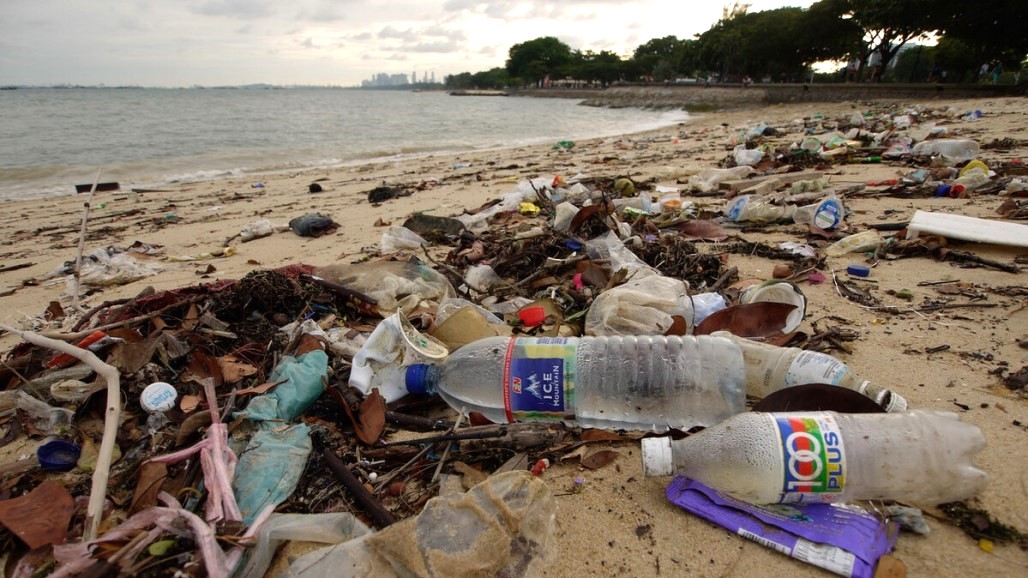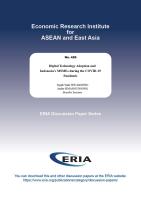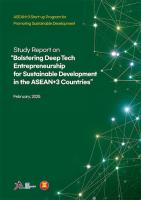
Southeast Asia accounts for nearly half of the global plastic leakage from land to sea. Photo credit: ADB.
The International Atomic Energy Agency is piloting the application of nuclear solutions to plastics recycling in Indonesia, Malaysia, the Philippines, and Thailand.
The International Atomic Energy Agency (IAEA) is piloting the application of nuclear solutions to plastics recycling in four countries in Southeast Asia—Indonesia, Malaysia, the Philippines, and Thailand.
The NUclear TEChnology for Controlling Plastic Pollution (NUTEC Plastics) project is using ionizing radiation to increase the volume of recycled plastic and convert more plastic waste into reusable resources, particularly for the production of industrial goods.
IAEA said this technology is effective and environmentally friendly. It also addresses the main problem in conventional recycling methods, which is the lower quality of plastic pellets produced. Irradiation can break down plastic polymers into smaller units that may be upcycled into new products.
Developing value-added materials
At a Circular Economy webinar organized by the Asian Development Bank (ADB) in March, IAEA Programme Management Officer Denis Subbotnitskiy discussed how recycling with irradiation can help countries in the region reduce plastic pollution and mitigate its adverse effects on nature and human health.
A 2015 study says five of the top 10 countries contributing to global plastic leakage from land to sea are in Southeast Asia. Shifting to a circular plastic economy can help the region address this problem. The NUTEC Plastics recycling project complements existing recycling and reuse capacities by strengthening the ability of the region to use radiation in developing value-added materials from waste polymers.
In his presentation, Subbotnitskiy explained that ionizing radiation can “alter the structure and properties of certain types of plastic waste or synergize reactions, saving energy with little to no additional chemical reactants.” He said the pilot countries deploy and combine different approaches (crosslinking/branching, grafting, oxidation, and scission) to polymers recycling and will develop different materials.
In Indonesia, the project will develop a compatibilizer to be used with wood plastic composites made of recycled polyethylene. In Malaysia, there are two sub-projects: the recycling of polytetrafluoroethylene (PTFE) using irradiation and plastic radiation pyrolysis. In the Philippines, the goal is to process plastic wastes through irradiation and produce housing construction materials, such as tiles and bricks. In Thailand, there are also two sub-projects: recycling of discarded fishing nets into high-density polyethylene (HDPE) pellets and development of wood plastic composite.
Marine plastics monitoring
Launched in 2021, the NUTEC Plastics initiative is also monitoring oceans and seas to better understand the extent and impact of marine plastic pollution. In Asia and the Pacific, this project seeks to establish downstream baseline surveys, determine the status and trends of marine plastic pollution impacts, and support science-based policy and decision-making. It is using isotopic tracing techniques for marine monitoring of microplastics.
Citing a study published in Science Advances, IAEA points out that only 9% of the plastic produced between 1950 and 2015 has been recycled. The rest are either in landfills, which leak into rivers, groundwater, and the ocean, or were incinerated and might have released toxic gases into the atmosphere. Unless the trend is reversed, there may be more plastic than fish in the ocean by 2050.
IAEA is working with experts in Asia and the Pacific to develop a harmonized protocol for microplastic monitoring. These involve developing common guidelines for the sampling, separation and identification of microplastics in beach sands, seawater and marine sediments.
This article was first published by BIMP-EAGA on 2 May 2023.

BIMP-EAGA
The Brunei Darussalam–Indonesia–Malaysia–Philippines East ASEAN Growth Area, or BIMP-EAGA, is a cooperation initiative established in 1994 to spur development in remote and less developed areas in the four participating Southeast Asian countries.


